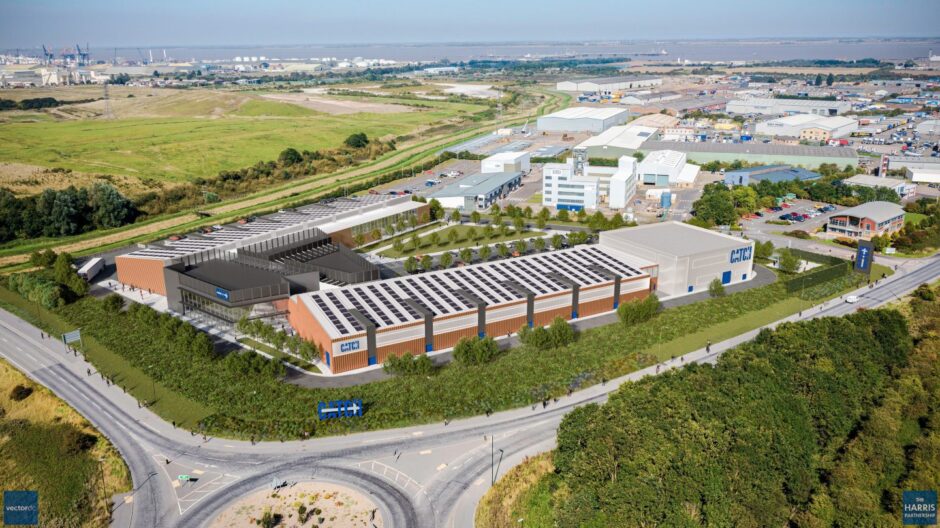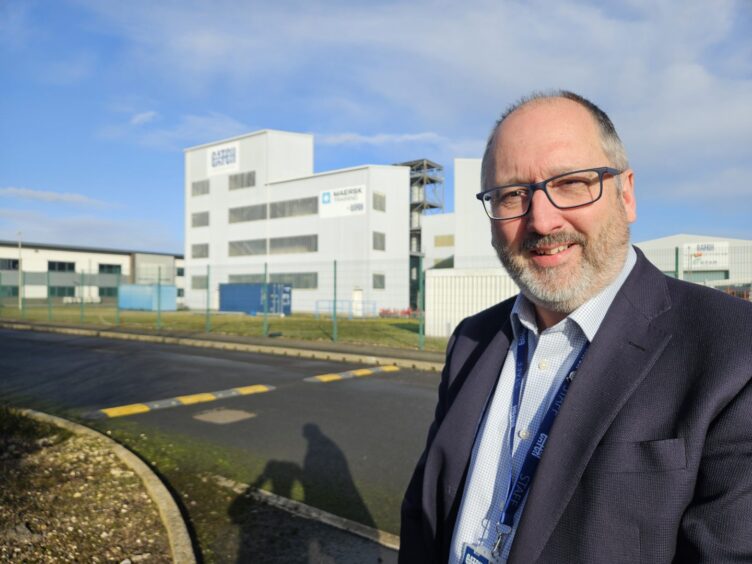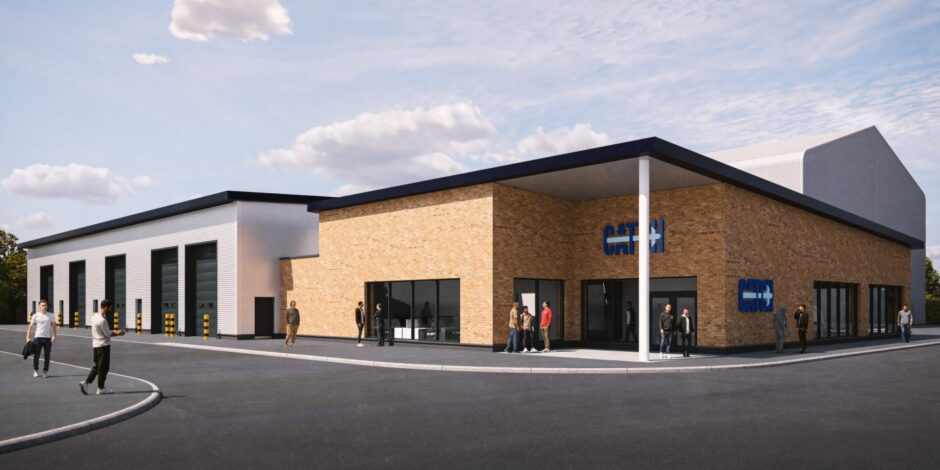
Hulking Humber bank process plants need to clean up their operations. New infrastructure is required at an eye-watering scale to bring in greener fuels and extract the harmful emissions currently belching out from the sky-piercing stacks, burying them deep below the near North Sea instead.
Oil refineries, steel and plastics producers, power… all need the solution.
Net zero goes well beyond offshore wind here in the second-most carbon-intensive industrial cluster in Europe. And while polarised policies and pounds in the public’s pockets or funding pots get the headlines on the meandering route to a planet-friendlier future, it is the people it needs to deliver where a real shortfall is seen.
Successful decarbonisation, not de-industrialisation, is the prize the region has in its sights, and the critical mass is as much about the trades as it is the abatement of those fossil fuel fumes.
Projects worth upwards of £18 billion are being eyed – jobs in the tens of thousands. Yet mechanical fitters, pipefitters, process engineers, project managers, designers, riggers and site managers are among the most difficult roles to fill, with ECITB research released last week revealing three quarters of employers are already struggling, above the national average.
Humber in focus
Looking to solve this part of the equation, while supporting the work to win over hearts and minds about the Humber’s case for hydrogen, carbon capture and storage and further skills investment, is David Talbot. Chief executive at industry training centre CATCH, he has just entered his tenth year at the helm of the Stallingborough facility.
When he joined it was a member organisation and landlord to other training providers, with a process unit to simulate with water and donated kit what was happening in closed environments in the near neighbourhood.
It started life under the name Humber Chemical Focus, evolving to take the title of the facility, seen as unique to an industry keen to address that age-old skills gap – ever present without the demand now forecast by a project pipeline packed with ambition.
Talbot, a former RAF squadron leader, had been a key figure in the emergence of BAE Systems’ Aircraft Maintenance Academy at Humberside Airport, and headed along the A180 to start the transition from landlord to training organisations, to an organisation training its own.
“The transition happened fairly quickly,” Talbot recalled. “In 2017, we set up our own provision with CATCH Skills, adult skills provision in regulatory health and safety-type training, and it just took off from there.”
CATCH was admitted to the Apprenticeship Register in 2021, and grand plans for the end of the decade we now sit in the midst of began to emerge.
“We, as CATCH, delivered the Humber Industrial Cluster Plan – the roadmap to net zero – on which we worked with HEY LEP and key employers around the region, who became partners.
“It saw the carbon capture cluster sequencing projects Viking CCS and Humber Zero come together, and come to us, in what has now become quite a pivotal moment for CATCH; to ask what it would take to go from 100 apprentices a year to 1,000.
“That was the headline message. And true to their word, that partnership of the key emitters, coupled with the Viking CCS programme, has led to a £1.2m investment from industry, and on what we are now starting to work on, £4.5m funding from Humber Freeport and £300,000 from ECITB, which has led to a whole phased programme that will get us to that 1,000.”
That programme started with a welding hub “something we could achieve quickly” which saw a fabrication workshop refurbished, providing the largest capacity for such training in England, with 79 bays. “It is a real game changer in terms of the regional output for welding, fabrication and pipefitting trades,” Talbot said.
Just the start
That is just the start. CATCH is now in the middle of a fifth phase of growth since opening in 2006. A new-build Renewable Energy Training Centre will support wind turbine technicians, but the mechanical skills on offer will benefit all energy-intensive industries on the net-zero journey.
It is with planners for the last plot on the current footprint, with an Industrial Decarbonisation Centre also in planning – a redevelopment of the original administration building to deliver networking, events and conferences, all encouraging the sharing of industry best practice.
It will boast a 120-seater capacity theatre-style capability, with collaboration areas. Virtual and augmented reality will complement the hands-on facilities CATCH offers.
“It is really exciting, it will help us to support the region to get to net zero, through support for inward investment, support for innovation and an expansion of our membership activity to deliver even more,” Talbot said.
The final element is a brand new centre on the greenfield site, adjacent, with ambition to be up and running in 2029.
The £60 million National Net Zero Training Centre concept was unveiled in September 2023. “That is the big prize, and there is a lot of work to go in on that one,” Talbot said. “We’re just starting to plan that, and that’s a long-term aim.
“We’ve not stood still here, we can’t. We’ve already seen four phases of growth, and each time we have had a new phase, we have filled it and seen a need to expand further. For me that confirms our model is right.
“The message has been clear for some time. The Humber is the biggest industrial cluster in the UK, some 20m tonnes of carbon are emitted every year, and we have got something like £20b of investment identified. You can’t build that infrastructure, operate it or maintain it, without the workforce. That’s what has been identified.
“We need 20,000 new engineering / construction trades people to build the infrastructure to get us to net zero. It is a transient workforce. If we don’t build that workforce now, we can have the best projects in the world, but we won’t be able to build them, and that’s what we’re here to support.”
Waiting for the green light
And here is the dilemma. The Catch-22 perhaps, here in early 2025.
“There are great plans waiting for the green light,” Talbot said, referring to the Humber’s overarching vision document.
“A lot of the people we are developing will not work directly for the investing company though. Some will, but many will become part of the contractor workforce. Contractors cannot sign up to move ahead until the emitter has the green light.
“We are all waiting for the green light, getting that tier of contractors signed up, then we can deliver, but that means we are behind where we need to be. We are trying to pump prime the whole system here with that programme from industry, which is fantastic, but it is difficult and there are challenges.
“Our programme isn’t just about building facilities. We have that engine to deliver new entrants to industry, and not just apprentices. We also need to engage young people, make sure our message is getting out that we have some fantastic jobs, fantastic industries with full careers, that with a great trade behind them are well renumerated. We’re getting that out and have invested in a team to do that.
“There’s also the complexity of delivering an apprenticeship. It makes it difficult. There can be headcount issues, there will always be contractor/client relationship issues, and there is just a lot of red tape around delivery.
“We have got to look at different ways of solving that and helping employers take on the workforce that is needed.”
Awareness is working. “We are certainly getting enough people applying for our apprenticeships. We have 150 available at the moment, and we are getting 400 to 500 applications for those.”
Diversity is increasing too, helped by programmes such as Women into Welding, showcasing potential and role models already out there.
The number of females enrolled across the past three years’ apprenticeships looks set to be eclipsed in the 2025 intake alone.
“It has been an incredible period,” Talbot said, buoyed by the recent £1 million ‘green skills’ pledge from Westminster to northern Lincolnshire too.
There is also May’s regionalisation of adult education budgets to ponder, with mayoral combined authorities coming to Greater Lincolnshire and Hull and East Yorkshire.
“I definitely see devolution as a positive for the region, for this industrial belt around the Humber. We can set our own agenda, and it is important there are a number of cross-over organisations, the likes of Future Humber, Humber Marine & Renewables and critically the Humber Energy Board and Humber Freeport. They are absolutely key, and we will be working together and sharing that agenda. We need to make sure the voice of industry is joined up and heard.”
Choppy waters
It is not all plain sailing when it comes to political intervention though, as the Budget has proven.
“It is a very difficult environment where you have a cap on what you can sell, yet all your supplier costs and employment costs are going up. It does make it difficult to deliver, and it makes it difficult to have a differentiator. For example, we offer added-value courses. Our apprentices go out oven-baked ready to go.
“We will have delivered working at height and working in confined space training, but all of that eats into that very small margin we have got. It gets harder and harder to deliver because the cap doesn’t increase, and in one of the apprenticeships it has actually reduced. They should all be going up with inflation.”
But the funding was a shot in the arm, as detail is awaited, as the team – grown from 16 to 80 in Mr Talbot’s tenure – look to widen the offering further, embracing supporting trades to those at the forefront of engineering a clean future.
“That was great news,” Mr Talbot said. “It is important to understand what that really means and ensure that is used as efficiently as possible to make sure we do deliver that growth in the energy sector.
“The messaging is great that skills are important to deliver the net-zero agenda.”
Recommended for you

 © Supplied by Catch
© Supplied by Catch © Supplied by CATCH
© Supplied by CATCH © Supplied by Catch
© Supplied by Catch